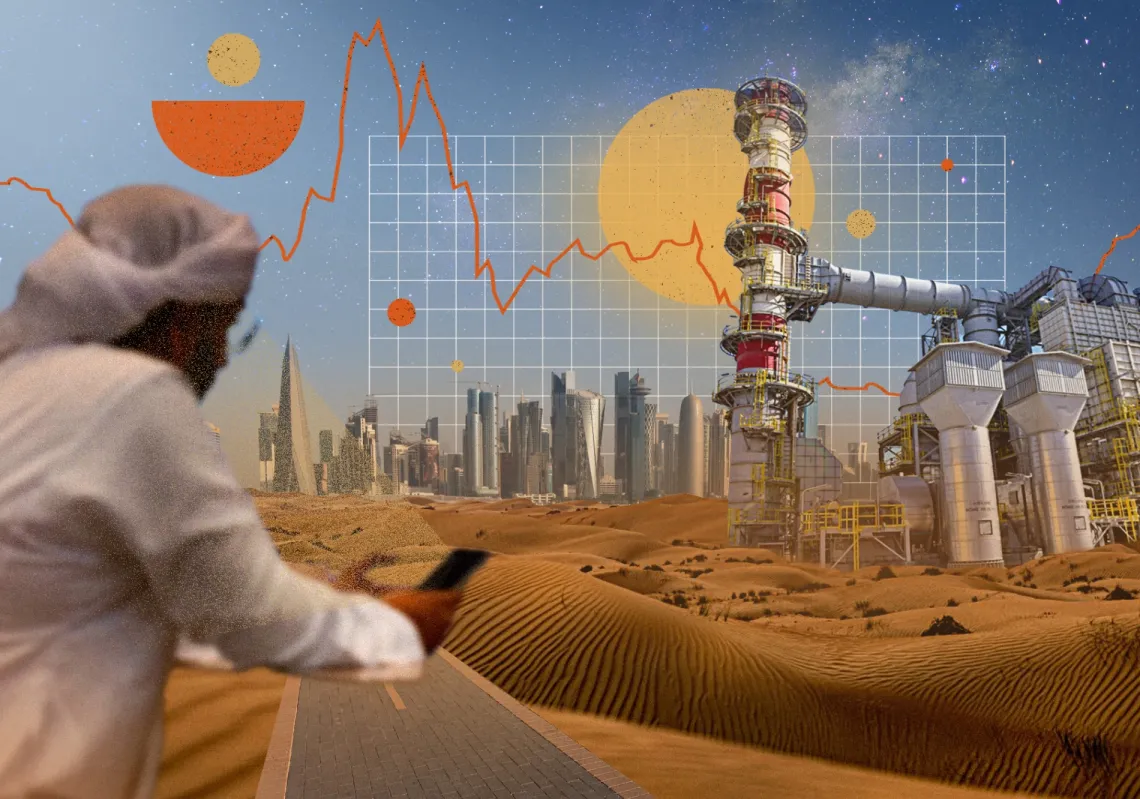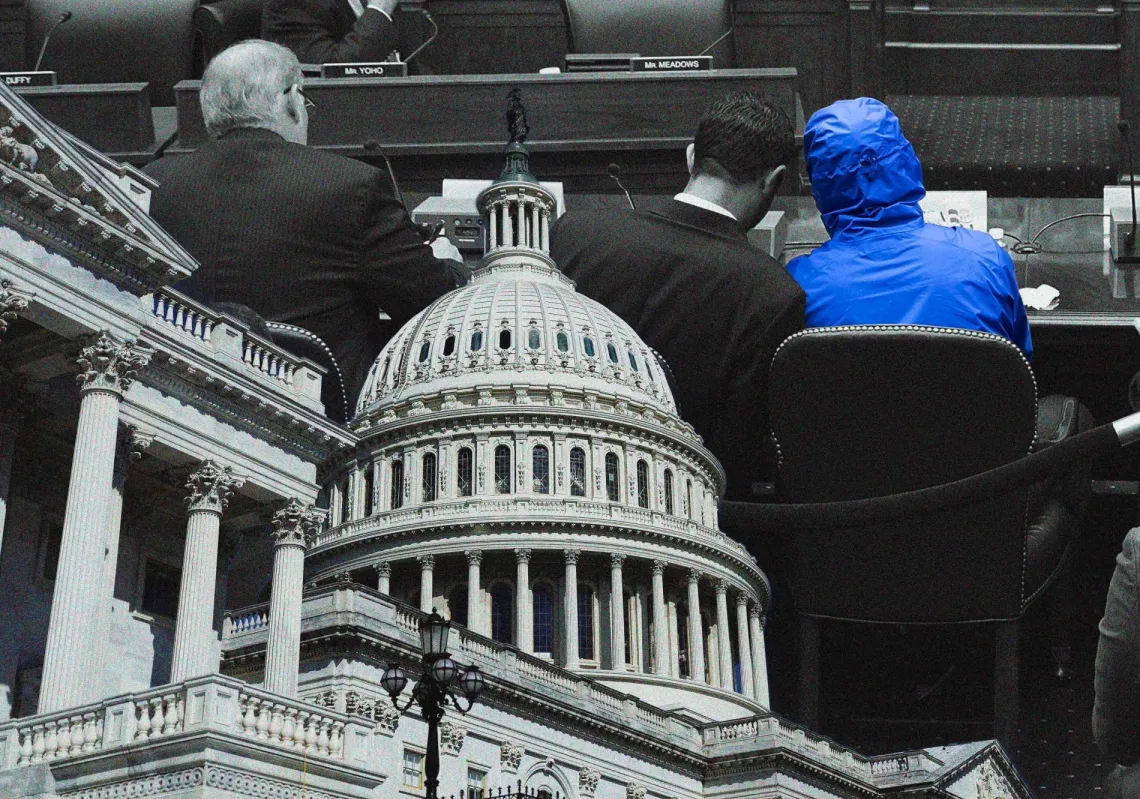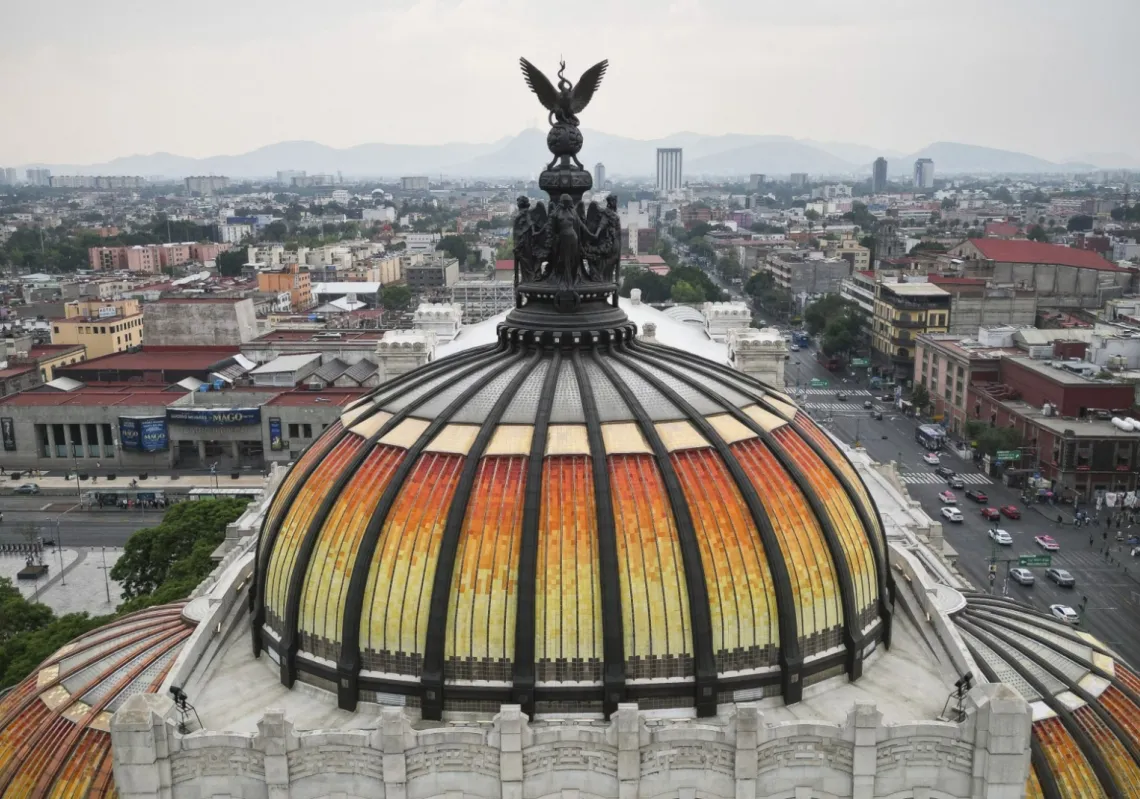Two years ago, I predicted in Foreign Affairs that the COVID-19 recession, coming on top of the financial crisis of 2008, would lead rich democracies to redefine the outer limits of their monetary and fiscal power, ushering in an “age of magic money.” Because central banks had a long record of containing inflation, the penalty for profligacy would likely not materialize; supersized stimuli could coexist with stable prices. Of course, the success of this experiment would depend on the continued inflation-fighting credibility of central banks, the Federal Reserve foremost among them. “If the Fed loses its independence, the age of magic money could end in catastrophe,” I noted.
Since then, the idea of magic money has been discredited. Although the Federal Reserve has yet to lose its independence, it has fumbled the inflation challenge in ways that I failed to take sufficiently seriously. For the first time in about two decades, the imperative of price stability will complicate central banks’ ability to achieve other objectives, from financial stability (it will be hard to cut interest rates to help weak borrowers) to employment stability (as it plays catch-up against inflation, the Fed will probably cause a recession). A few years ago, cartoonists regularly portrayed central bankers in Superman outfits. Now that inflation has returned, the monetary superheroes have lost their powers.
How long this fall to earth will endure depends on two questions. First, was the whole idea of magic money doomed from the get-go, or could it have succeeded if managed differently? Second, if some other approach could have worked, can the Fed learn lessons from its experience?
THE ROAD TAKEN
Start with the first question, which is the more straightforward. Under the right conditions, magic money can undoubtedly be deployed successfully.
Both theory and experience teach that large economic stimuli—delivered by central bankers or budget authorities or both—need not destabilize prices. If a financial crash or a pandemic causes private spending to collapse, governments can print money and run budget deficits to push spending up again. If this intervention is well calibrated, demand will remain in balance with supply, causing no change in inflation. To be sure, the calibration is difficult, not least because government largess puts money into the hands of private companies and households, whose eagerness to spend is uncertain. But stimulus at least has a shot at balancing supply and demand. In contrast, not stimulating guarantees that demand will be too low, ushering in deflation and recession.
The government’s response to the 2008 financial crisis provides an illustration of this process. Central banks printed trillions of dollars, leading their critics to predict terrible inflation. But in the 36 quarters from 2009 to 2017, core inflation never exceeded the Fed’s two percent target, averaging only 1.5 percent. Far from being reckless, this first experiment with magic money was actually too timid: given the inflation undershoot, an even larger stimulus would have been appropriate. Even so, the stimulus was a success. It saved the U.S. economy from a repeat of the Great Depression of the 1930s.
At first, the response to COVID-19 was even more impressive. The pandemic caused U.S. GDP to collapse in the second quarter of 2020: output shrank at an annualized rate of 32 percent. This fall was four times deeper than the hit from the financial crisis in the fourth quarter of 2008; indeed, it was the sharpest ever contraction in the post–World War II period. The Fed responded aggressively, creating twice as much money as it had from 2008 to 2009. Likewise, the president and Congress delivered a budget stimulus that was twice as big as the 2009 version. By acting so vigorously, authorities demonstrated that they had learned the lesson of the last recession, when they undershot with their spending. They were also emboldened by the fact that inflation expectations were low, reducing the risk that a stimulus would set off an upward price spiral.
In the second half of 2020 and the first quarter of 2021, this mega-stimulus worked perfectly. The U.S. economy bounced back, almost recovering its pre-pandemic level of output. And despite the lavish money-printing, there was no sign of inflation. In the first quarter of 2021, the Fed’s preferred index of “core” prices was up just 1.7 percent from the previous year. As of March, the broader consumer price index remained well within the comfort zone.
If the authorities had been able to stop there, they would have pulled off a textbook example of macroeconomic stabilization. But from the spring of 2021 the experiment started to go wrong. How it failed provides lessons for policymakers attempting to navigate the current macroeconomic moment.
DON’T BLAME THE BULLY PULPIT
When I proposed the idea of magic money back in 2020, the likeliest source of economic misjudgment appeared to reside in the White House. U.S. President Donald Trump had scant respect for the independence of the central bank, tweeting about it on more than 100 occasions. “My only question is, who is our bigger enemy, Jay Powell or Chairman Xi?” he fulminated in the summer of 2019, at a time when Fed Chair Jerome Powell was hiking interest rates more than Trump found congenial. The closest historical precedent for this bullying illustrated how serious the consequences could be. In the 1970s, President Richard Nixon slandered Fed Chair Arthur Burns. The browbeating contributed to the chronically timid monetary policy of that decade, and hence to stagflation.
Given this experience, Trump’s intemperate Fed commentary seemed to present the chief risk of magic money. It was easy to imagine a situation in which, because of the difficulty of calibrating the stimulus, there might be an initial spurt of inflation. Once that happened, the Fed might flinch from clamping down, allowing inflation to persist out of fear of pressure from the White House.
The 2020 election changed this calculus. Unlike his predecessor, President Joe Biden showed no inclination to browbeat the Fed, on Twitter or elsewhere. His Treasury secretary, Janet Yellen, was herself a former Fed chair, and would therefore be the last person to attack the institution. In May 2022, with the inflation threat intensifying, Biden went out of his way to emphasize the independence of the central bank. “My predecessor demeaned the Fed, and past presidents have sought to influence its decisions inappropriately during periods of elevated inflation,” he wrote in The Wall Street Journal. “I won’t do this,” he added.
But it turns out that presidential bullying is not the only reason why central banks lose their grip on inflation. Starting in the spring and summer of 2021, the Fed committed three mistakes, opening the door to today’s price surge. Regrettably, very few observers, and certainly not this one, anticipated all three. But the good news is that two of these errors point to ways in which the Fed can reform its approach in the future, perhaps allowing an eventual return to the use of magic money.
NOT A PASSING PHASE
The Fed’s first error has received by far the most attention, but it is also the hardest to learn from. It consisted in miscalibrating the balance between supply and demand, a challenge that, as noted already, is necessarily hard, given the unpredictable spending decisions of private citizens and companies.
The miscalibration began with the passage of the American Rescue Plan in March 2021. This was the third budgetary stimulus delivered by the U.S. Congress, and it crossed the line from appropriate support to dubious overreach. In March and April 2020, Washington had enacted a fiscal stimulus worth $2.4 trillion; in December it had followed up with a further $900 billion. With this extra spending in the pipeline, the U.S. economy was expected to grow by four percent between the fourth quarter of 2020 and the fourth quarter of 2021, a respectable performance. The March 2021 stimulus sloshed an extra $1.9 trillion of fuel onto the fire. Commenting on the likely upshot before the passage of the bill, the Brookings Institution forecast that by the end of 2021 the economy would be “operating above its maximum sustainable level.”
Confronted with this risk of inflationary overshoot, the Fed declined to raise interest rates or dial back its quantitative easing—the bond-buying program by which it affects longer-term interest rates. To some Fed critics, this was a clear error. If the central bankers had listened to forecasters such as the Brookings team, they would have headed off today’s inflation. But the truth is that forecasting in the midst of the pandemic was more art than science, and the Fed’s wait-and-see attitude was arguably understandable. Although the $1.9 trillion stimulus presented an obvious risk of overreach, it remained possible that other forces would conspire to dampen demand. To cite just one wild card, the contagious Delta variant of COVID-19 spread rapidly in the summer of 2021, leading to a surge in the total infection rate in August and September.
As the Fed sat on the sidelines, core inflation drifted up, reaching an annual rate of 3.4 percent by the second quarter of 2021 and 3.6 percent in the third quarter. Again, with the benefit of hindsight, the Fed should have hiked interest rates, snuffing out the inflation before it became serious. But the Fed justified procrastination by arguing that the inflation was merely “transitory.” COVID-19-related supply-chain snafus seemed to explain the upward pressure on prices; as workers returned to jobs and ports reopened, these bottlenecks would surely correct themselves. And to be fair to the central bankers, respected private economists shared this optimistic view. As late as November, the economics team at Goldman Sachs opined that “underlying supply-demand imbalances will … largely work themselves out, leaving inflation near the Fed’s goal.” That same month, Nobel Prize laureate Paul Krugman ascribed the inflation to supply-chain bottlenecks and called it “an excusable and manageable problem.”
Of course, in retrospect, Team Transitory was wrong, and I shared in this error. Those who correctly predicted the price surge are entitled to their victory lap. If there’s a lesson from this episode, it’s that stimulus is inflationary when an economic shock damages supply more than demand: in hindsight, the striking fact about the emergence from the pandemic is that people resumed spending faster than they resumed work. But the larger point is that responding to an unprecedented health crisis combined with a record GDP shock is inescapably hard, and the familiar insight that supply shocks are different from demand shocks won’t make the response easier. The Fed already retains an economics faculty nearly eight times larger than Harvard University’s; if it had been obvious that people were going to return to work slowly, constraining supply, the central bankers would have tightened earlier. Telling the Fed to distinguish supply shocks from demand shocks is like instructing a sprinter to run fast. The advice is so obvious as to be useless.
Whatever the merits of the “transitory” debate, by the end of November 2021 it was over. Core inflation came in at 4.2 percent for the year to October, a marked acceleration since the summer. On November 30, Powell testified to Congress that it was time to retire the T word.
But then the Fed committed its second error. Rather than admitting its misjudgment and raising interest rates quickly, it waited more than three months to do so. When the hike finally came, in March 2022, it was the smallest it could be: 25 basis points, or a quarter of a percentage point. This was all the more remarkable because by the time of the March meeting the case for stronger medicine was clear: core inflation had climbed steadily, to 5.3 percent over the year through February, and Russia’s invasion of Ukraine on February 24 was set to boost the cost of food and energy. Yet it was not until the Fed’s June meeting that it finally got serious, delivering a 75-basis-point hike. By then, more than six months had elapsed since Powell had given up on “transitory.”
Unlike the Fed’s wait-and-see approach in 2021, the excruciatingly slow course correction in the first half of 2022 was inexcusable. Faced with a negative shock to the economy, the Fed has always been quick to provide stimulus. But when it came to fighting inflation, it refused to provide the bitter medicine of rate hikes with anything like the same urgency.
Why was the Fed so languid? The reason lay in its misguided attachment to “forward guidance,” the practice of signaling interest-rate moves well ahead of implementing them. This speak-wait-act triple jump is useful when inflation is too low and the Fed, having already slashed the short-term interest rate to zero, has no room to cut further. In such circumstances, when policy has hit what central bankers call the zero lower bound, forward guidance allows the Fed to promise an extended period of rock-bottom short-term interest rates. A long period of guaranteed low short rates makes for lower long-term rates. Forward guidance thus becomes an additional way to provide stimulus to the economy.
This logic ceases to matter when the Fed faces the opposite challenge of high inflation. To bring inflation down, the Fed can raise the short-term interest rate as much as it likes: there is no upper bound, and therefore no pressing need for forward guidance. But in the wake of its admission that inflation was non-transitory, the Fed stuck to forward guidance anyway, floating the idea of raising rates, then waiting, then acting. The best rationalization of this behavior is that the Fed feared that a sudden rate hike would upset investors and cause a panicky market fall. But this concern is overblown. When the goal is to cool the economy and get inflation down, a market decline is desirable.
In short, the Fed’s fondness for forward guidance needs rethinking. By refusing to hike interest rates promptly, and by waiting half a year before delivering a 75-basis-point rise, the Fed allowed bad inflation to get worse, an error for which the economy will now pay dearly. But the good news is that the lesson from this mistake is straightforward. Sometimes the Fed should act without guiding the markets. Sometimes speed is the priority.
PAY ATTENTION TO MARKETS
The Fed’s last error was to ignore the financial bubble that inflated during 2021, signaling that trouble was brewing. As with the excessive fealty to forward guidance, the policy of ignoring the bubble reflected a deeply ingrained reflex among central bankers. Its origin dates back to 1996, when Fed Chair Alan Greenspan gingerly questioned Wall Street’s “irrational exuberance.” Stock prices proceeded to boom over the next year, and the Fed’s leaders concluded that commenting on markets was a fool’s errand. The best policy, they decided, was to keep quiet about booms, then cut interest rates after the busts to cushion the economy.
Calling market tops is hard, and the Fed’s caution is understandable. Given that central banks have one main policy instrument—the interest rate—they can’t respond to two separate signals if these point in different ways: if, for example, the economy looks weak while the stock market looks bubbly. But the Fed’s see-no-evil stance on bubbles has been taken too far. The last two recessions before the 2020 COVID-19 shock followed traumatic market corrections—the dot-com bust of 2000-2001 and the mortgage collapse of 2007-8. In modern financialized economies, asset prices are simply too important to ignore. They are both a signal of pressures to which the Fed ought to respond and a warning of disruption if the Fed does nothing.
In debates about this issue over the past twenty years, the see-no-evil camp has pointed to cases in which a central bank has raised interest rates to prick a bubble, only to reverse course when the hike harms the real economy. But this is a straw man. Nobody is suggesting that central bankers should tighten when unemployment is elevated, inflation is substantially below target, or growth is below trend: of course the real economy must be the priority. But sometimes the Fed confronts circumstances in which real-economy indicators are solid while financial ones look positively exuberant. Under these conditions, bubbly asset prices are a signal that the Fed should tighten more than if it were simply targeting inflation. Past examples include late 1998 and early 1999, when the Fed allowed the dot-com mania to run wild; and 2004–5, when it ignored the mortgage bubble.
In mid-2021, a policy of leaning against the financial winds would also have served the Fed well. On July 1, the tech-heavy Nasdaq index closed at 14,522, a scary 48 percent above its peak on the eve of the pandemic. Meanwhile real estate was frothy, cryptocurrencies were booming, and celebrities were forming Special Purpose Acquisition Companies (SPACs)—mechanisms for taking companies public while avoiding proper scrutiny. Even if the Fed thought that the incipient inflation was transitory, asset prices were screaming that the economy was running hot. Too much money was chasing too few savings instruments. If the Fed had factored financial signals into its decisions, it would have tightened earlier, and the economy might have been spared the 2022 inflation.
Hence the second clear lesson for future leaders of the Fed. When asset prices shoot up, pay attention. Depending on what is happening with the real economy, this could well be a signal to raise interest rates.
LESSONS LEARNED
Where does all this leave magic money? For the foreseeable future, it is off the table. The priority must be to control inflation, a necessary condition for upholding the credibility of the Fed, without which economic stability is impossible. Unfortunately, this struggle against inflation may take time. The three decades of low inflation and low interest rates running from roughly 1992 to 2022 were partly the result of globalization, which exerted a downward pressure on prices. Today, globalization has stalled, and the new vogue for stockpiling strategic commodities and “friend-shoring” supplies will be inflationary. Add in the aging of populations and the possibility that young workers will insist on a flexible approach to work, and the Fed may have to run tighter policy than in the past quarter of a century. The expectation that took hold in the late 1990s, that the Fed could be relied upon to cushion the economy from almost any type of shock, may have to be revised. The next few years could be bruising.
But, just as the stagflationary 1970s gave way to the stability and prosperity of later years, so the cycle will turn again. The Fed will get inflation under control, and central banks will once again work magic. Over the long sweep of post–World War II history, the art and science of central banking has advanced steadily, with each decade of experience building on the previous ones. Sometimes the most humiliating setbacks teach the most valuable lessons.
This article was originally published by Foreign Affairs.










